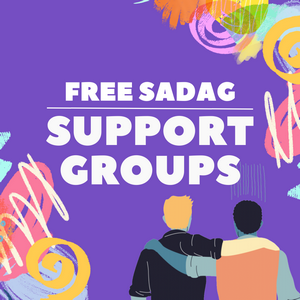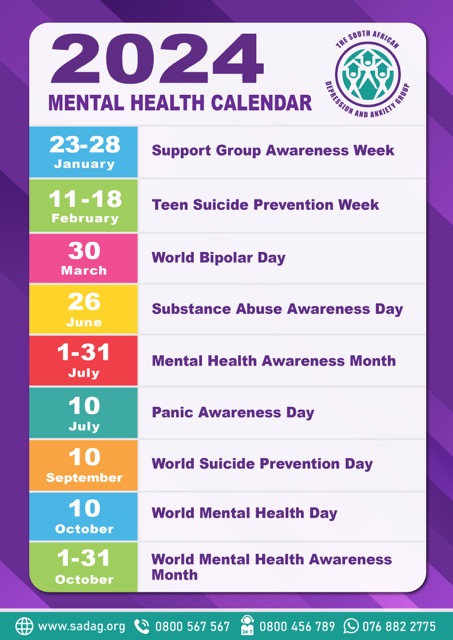I always thought I was just a worrier I’d feel keyed up and unable to relax. At times it would come and go and at times it would be constant. It could go on for days. I'd worry about what I was going to fix for a dinner party, or what would be a great present for somebody. I just couldn't let something go.
I'd have terrible sleeping problems. There were times I'd wake up wired in the morning or in the middle of the night. I had trouble concentrating, even reading the newspaper or a novel. Sometimes I’d feel a little lightheaded. My heart would race or pound. And that would make me worry more.
Generalised Anxiety Disorder (GAD) is much more than the normal anxiety people experience day to day. ICs chronic and exaggerated worry and tension, even though nothing seems to provoke it. Having this disorder means always anticipating disaster, often worrying excessively about health, money, family, or work. Even though sometimes the source of the worry is hard to pinpoint. Simply the thought of getting through the day provokes anxiety.
People with GAD can't seem to shake their concerns, even though they usually realise that their anxiety is more intense than the situation warrants. People with GAD also seem unable to relax. They often have trouble falling or staying asleep. Their worries are accompanied by physical symptoms, especially trembling, twitching, muscle tension, headaches, irritability, sweating, or hot flashes. They may feel light-hearted or out of breath. They may feel nauseated or have to go to the bathroom frequently. Or they might feel as though they have a lump in the throat.
Many individuals with GAD startle more easily than other people. They tend to feet tired, have trouble concentrating, and sometimes suffer depression, too.
Usually the impairment associated with GAD is mild and people with the disorder don’t feel too restricted in social settings or on the job. Unlike many other anxiety disorders, people with GAD don't characteristically avoid certain situations as a result of their disorder. However, if severe, GAD can be very debilitating, making it difficult to carry out even the most ordinary daily activities.
GAD comes on gradually and most often hits people in childhood or adolescence, but can begin in adulthood, too. It's more common in women than in men and often occurs in relatives of affected persons. It’s diagnosed when someone spends at least 6 months worrying excessively about a number of everyday problems.
Having GAD means always anticipating disaster, often worrying excessively about health, money, family, or work. Worries are often accompanied by physical, symptoms like trembling, muscle tension and nausea.
In general, the symptoms of GAD seem to diminish with age. Successful treatment may include the use of anti-depressants and benzodiazepines. Also useful are cognitive-behavioural therapy, relaxation techniques, and biofeedback to control muscle tension.
Treatment for Anxiety Disorders
Many people with anxiety disorders can be helped with treatment. Therapy for anxiety disorders often involves medication or specific forms of psychotherapy
Medications, although not cures, can be very effective at relieving anxiety symptoms. Today, thanks to research, there are more medications available than ever before to treat anxiety disorders. So if one drug is not successful, there are usually others to try. In addition, new medications to treat anxiety symptoms are under development.
For most of the medications that are prescribed to treat anxiety disorders, the doctor usually starts the patient on a low dose and gradually increases it to the full dose. Every medication has side effects, but they usually become tolerated or diminish with time. If side effects become a problem, the doctor may advise the patient to stop taking the medication and to wait a week - or longer for certain drugs - before trying another one. When treatment is near an end, the doctor will taper the dosage gradually.
Research has also shown that behavioural therapy and cognitive-behavioural therapy can be effective for treating several of the anxiety disorders.
Behavioural therapy focuses on changing specific actions and uses several techniques to decrease or stop unwanted behaviour. For example, one technique trains patients in diaphragmatic breathing, a special breathing exercise involving slow, deep breaths to reduce anxiety. This is necessary because people who are anxious often hyperventilate, taking rapid shallow breaths that can trigger rapid heartbeat, lightheadedness, and other symptoms. Another technique - exposure therapy - gradually exposes patients to what frightens them and helps them cope with their fears.
Like behavioural therapy, cognitive-behavioural therapy teaches patients to react differently to the situations and bodily sensations that trigger panic attacks and other anxiety symptoms. However, patients also learn to understand how their thinking patterns contribute to their symptoms and how to change their thoughts so that symptoms are less likely to occur. This awareness of thinking patterns is combined with exposure and other behavioural techniques to help people confront their feared situations. For example, someone who becomes light-headed during a panic attack and fears he is going to die can be helped with the following approach used in cognitive-behavioural therapy. The therapist asks him to spin in a circle until he becomes dizzy. When he becomes alarmed and starts thinking “I’m going to die”, he learns to replace that thought with a more appropriate one, such as “It’s just a little dizziness-I can handle it.”
How to get help for Anxiety Disorders
If you, or someone you know, has symptoms of anxiety, a visit to a general practitioner is usually the best place to start. A-doctor can help you determine if the symptoms are due to an anxiety disorder, some other medical condition, or both. Most often, the next step to getting treatment for an anxiety disorder is referral to a psychiatrist or psychologist.
Among the professionals who can help are psychiatrists, psychologists, social workers, and counsellors. However, it's best to look for a professional who has? In cognitive- behavioural therapy and who is open to the use of medications, should they be needed.
Psychologists, social workers, and counsellors sometimes work closely with a psychiatrist or other doctor, who will prescribe medications when they are required. For some people, group therapy or self-help groups are a helpful part of treatment. Many people do best with a combination of these therapies.
When you're looking for a GP, psychiatrist or psychologist, it's important to inquire about what kinds of therapy he or she generally uses or whether medications are available. It's important that you feel comfortable with the therapy. If this is not the case, seek help elsewhere. However, if you've been taking medication, it's important not to quit certain drugs abruptly, but to taper them off under the supervision of your physician. Be sure to ask your physician about how to stop a medication.
Remember, though, that when you find a health-care professional you're satisfied with, the two of you are working as a team. Together you will be able to develop a plan to treat your anxiety disorder that may involve medication, behavioural therapy, or cognitive-behavioural therapy, as appropriate. Treatments for anxiety disorders, however, may not start working instantly your doctor or therapist may ask you to follow a specific treatment plan for several weeks to determine whether it's working.

























